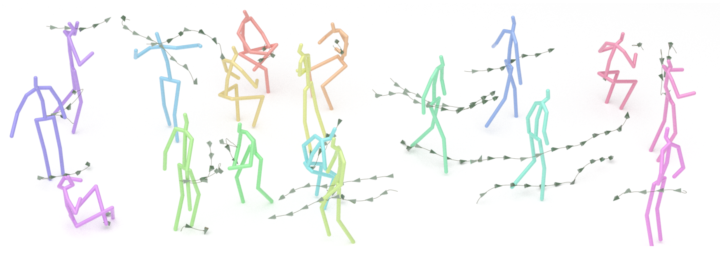TrajeVAE: Controllable Human Motion Generation from Trajectories
 Scene of human animations generated with TrajeVAE
Scene of human animations generated with TrajeVAEAbstract
The creation of plausible and controllable 3D human motion animations is a long-standing problem that requires a manual intervention of skilled artists. Current machine learning approaches can semi-automate the process, however, they are limited in a significant way: they can handle only a single trajectory of the expected motion that precludes fine-grained control over the output. To mitigate that issue, we reformulate the problem of future pose prediction into pose completion in space and time where multiple trajectories are represented as poses with missing joints. We show that such a framework can generalize to other neural networks designed for future pose prediction. Once trained in this framework, a model is capable of predicting sequences from any number of trajectories. We propose a novel transformer-like architecture, TrajeVAE, that builds on this idea and provides a versatile framework for 3D human animation. We demonstrate that TrajeVAE offers better accuracy than the trajectory-based reference approaches and methods that base their predictions on past poses. We also show that it can predict reasonable future poses even if provided only with an initial pose.